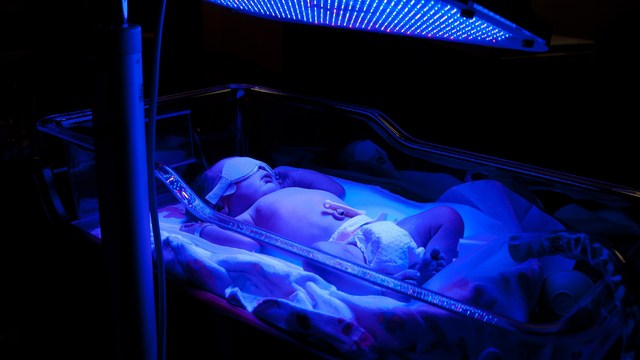Jaundice is a yellow discoloration of the skin, mucous membranes and the whites of the eyes that are caused by increased amounts of bilirubin in the blood. "Signs" of an illness can be distinguished from "symptoms" of an illness because signs are objective physical findings, whereas symptoms are things that a patient feels or notices.
In addition to the aforementioned yellow discoloration, some of the common signs of jaundice include: light-colored stools and dark-colored urine, whereas itching of the skin is a symptom of jaundice.
The yellow pigment associated with jaundice is from bilirubin, a byproduct of old red blood cells. Generally, jaundice is a sign of another, underlying disease process, which (of course) may have its own signs and symptoms.
Some of the most common correlated symptoms include include: nausea, vomiting, abdominal pain, fever, headache, weakness, loss of appetite, confusion, and swelling of the legs and abdomen.
Since jaundice is oftentimes a symptom of an underlying illness, it is important to seek medical attention upon noticing common signs. After taking a detailed history of the patient's illness, the doctor will likely examine the patient and order additional tests in hopes of identifying the cause of the patient's jaundice.
The most common tests that doctors order for a patient with jaundice include: (1) blood tests
(2) pregnancy test (for females)
(3) urinalysis and
(4) imaging studies
Blood tests shed important light on blood count and evaluate electrolytes, while liver function tests that measure bilirubin level and detect inflammation of the pancreas. Of course, the doctor will likely require additional tests based upon initial results, symptoms and the patient’s medical history.
Urinalysis, an analysis of the urine, is also a very useful test for healthcare practitioners in the diagnosis of screening many diseases. Doctors also use imaging studies such as ultrasounds, CT scans, HIDA scans, MRIs and ERCPs use technology involving sound, x-rays, magnetic fields and endoscopes (respectively) to provide details about abnormalities and obstructions.
Since jaundice is often related to liver issues, a liver biopsy is often ordered to diagnose inflammation of the liver, cirrhosis and cancer. In this procedure, a needle is inserted into the liver after a local anesthetic has been administered.
Sometimes, physicians use ultrasound to guide placement of the needle. The small sample of liver tissue obtained during the biopsy procedure is then sent to a laboratory for a pathologist (a physician who specializes in the diagnosis of tissue samples) to examine.
Sources:
Jaundice. Web. Emedicinehealth.org. Accessed 5 Oct. 2011.
http://www.emedicinehealth.com/jaundice/page2_em.htm
Jaundice Symptoms. Web. Jaundicesymptoms.org. Accessed 5 Oct. 2011.
http://jaundicesymptoms.org
Jaundice Symptoms. Web. Mayoclinic.org. Accessed 5 Oct. 2011
http://www.mayoclinic.com/health/infant-jaundice/DS00107/DSECTION=symptoms
Reviewed October 12, 2011
by Michele Blacksberg RN
Edited by Jody Smith




Add a CommentComments
There are no comments yet. Be the first one and get the conversation started!